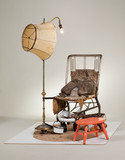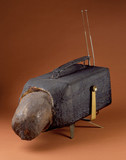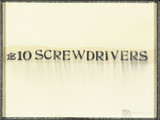Back Seat Dodge '38, (1964) one of Ed Kienholz's most famous assemblage sculptures, gained notoriety in 1966 when it became the focus of a public dispute involving censorship and funding of the arts (Back Seat Dodge '38, details). That moment in contemporary art is an important part of LACMA's institutional history and is well documented throughout the museum's Archives.
Kienholz was born in 1927 in the farming community of Fairfield, Washington. During his youth he learned many skills, such as carpentry and engineering, that he would later incorporate into his artwork. He moved to Los Angeles in 1953, where he established himself as an artist; in 1956, he co-founded with Walter Hopps (later a well respected curator and museum director) the influential Ferus Gallery, the first vanguard art gallery in the region.
In 1954 Kienholz began making what he later termed "broom paintings" by assembling wood fragments into reliefs, then pouring paint over their surfaces and moving the paint with broom bristles. His style developed rapidly and by 1957 he worked almost exclusively with found objects to create dramatic assemblage sculptures that often contained scathing social commentary (The U.S. Duck, History as a Planter, A Lady Named Zoa). In 1961, Kienholz increased the scale of his works to build what he called "tableaux" - large installations that allowed the viewer to enter the space (Roxy's). The tableau would become Kienholz's signature style, with striking juxtapositions and startling imagery that often referenced earlier historical periods while drawing upon current social issues.
As curator Maurice Tuchman noted in his introductory essay for Kienholz's solo exhibition in 1966, "Kienholz makes no romantic attempt to transform his material into precious stuff. He accepts the qualities of age and usage but he changes one essential characteristic: to junk, the symbol of imminent death, Kienholz lends permanence."



